Half Slave Half Free Sparknotes
Frederick Douglass: The slave who became a statesman
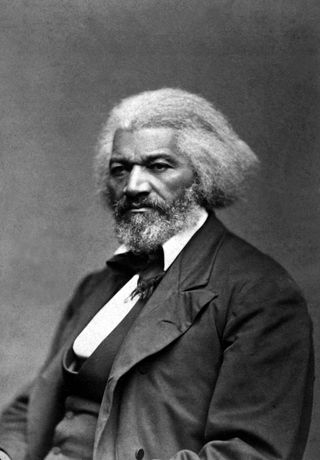
Though he started life as a slave, Frederick Douglass became an abolitionist, orator, writer, statesman and ambassador. He liberated himself in 1838 and in 1845 published his first autobiography, "Narrative of the Life of Frederick Douglass, an American Slave," (The Anti-Slavery Office, 1845). The volume, alongside his work for the abolitionist movement and the Cloak-and-dagger Railroad, helped him go one of the most famous African American men of his era.
Born into slavery
Frederick Augustus Washington Bailey was built-in around Feb 1818, although no records exist of the exact date) in Talbot County, Maryland. His mother was sent away to another plantation when he was a infant, and he saw her only a handful of times in the dark of night, when she would walk 12 miles to visit him. She died when he was 7 years sometime.
Douglass was moved several times throughout his childhood, living on several Maryland farms and in households in the city of Baltimore. Douglass would later claim in his autobiography that his move to Baltimore "laid the foundation, and opened the gateway, to all my subsequent prosperity."
Related: four myths nigh the history of American slavery
1 slaveholder, Sophia Auld, took a dandy interest in Douglass when he was 12 and taught him the alphabet, but her husband disapproved of educational activity slaves to read and write. Eventually, Auld ceased her lessons and hid his reading materials.
Just Douglass continued to find means to learn, trading bread with street children for reading lessons. The more than he read, the more than tools he gained to question and condemn slavery. By 1834, while working on a new plantation, Douglass set up a secret Sunday schoolhouse where around twoscore slaves would get together and learn to read the New Testament. After neighboring plantation owners became aware of these clandestine meetings, they attacked the group with stones and clubs, permanently dispersing the school.
In 1837, Douglass met Anna Murray, a free Black woman in Baltimore who was five years his senior. The pair speedily roughshod in love and Murray encouraged him to escape. The following year, in 1838, aged 20, Douglass made his suspension from the shackles of slavery.
Escape and the abolitionist movement
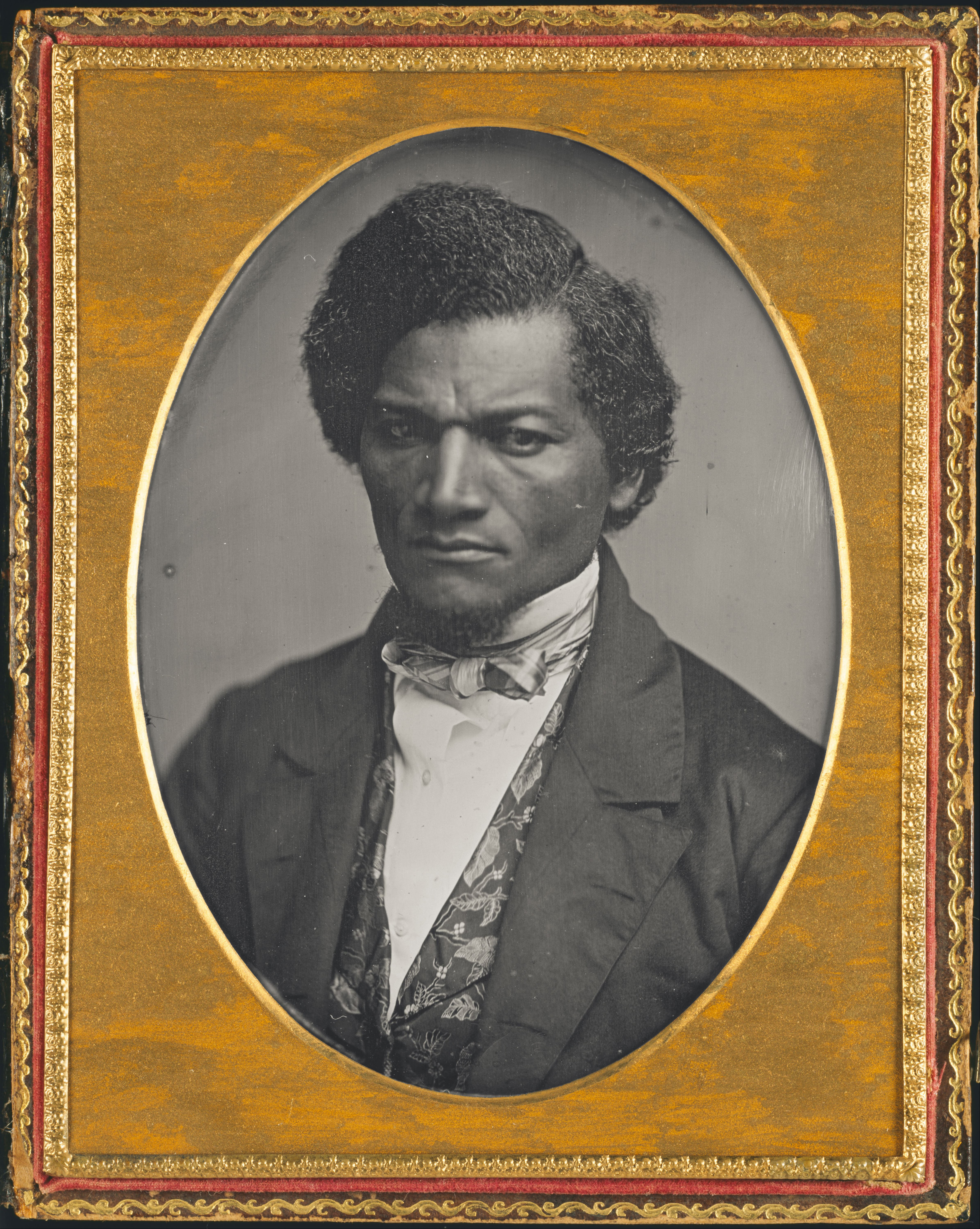
In under 24 hours Douglass traveled from Maryland, a slave state, to New York, a complimentary country, boarding northbound trains, ferries, and steamboats. Along the way, Douglass even disguised himself in a sailor'south compatible to avert detection. Upon setting foot in New York, Douglass was free to decide the management of his own life for the first time. Murray joined him and they were apace married, settling on the new name "Douglass." Co-ordinate to his autobiography, the new surname was inspired by Sir Walter Scott'south verse form "The Lady of the Lake."
Moving betwixt abolitionist stronghold towns in Massachusetts, the pair became active members of the church community attended by many prominent erstwhile slaves, including Sojourner Truth and later Harriet Tubman.
By 1839 Douglass was a licensed preacher, a part in which he honed his speaking skills. He was also an active attendee of abolitionist meetings and, at historic period 23, gave his first anti-slavery voice communication at the Massachusetts Anti-Slavery Society Convention in Nantucket.
Related: What shaped Martin Luther King Jr.'southward prophetic voice? (opens in new tab)
As one of few men to have escaped slavery with a willingness and ability to speak about his experiences, Douglass became a living embodiment of the impacts of slavery and an paradigm of Black stature and intellect.
In an interview with PBS, historian David West. Blight, author of "Frederick Douglass: Prophet of Freedom," (Simon & Schuster, 2018), claimed that certain white abolitionists "wanted Douglass to simply get upward and tell his story, to tell his narrative on the platform. They didn't want him to speak virtually Northern racism, to take on the whole picture of the anti-slavery movement as much as he did." This strained Douglass' relationships with another major abolitionists. Notwithstanding, Douglass continued to recognize the power of challenging and reshaping harmful caricatures of Black people.
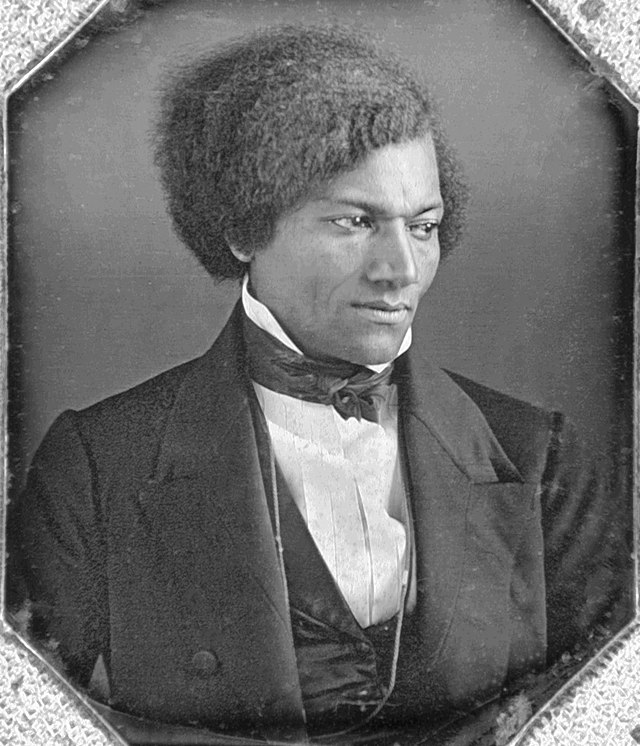
(opens in new tab)
Douglass published his autobiography (opens in new tab) in 1845. Its subsequent success and acclaim led historian James Matlack to depict it equally "the all-time-known and most influential slave narrative written in America" in a 1960 article from the journal Phylon (opens in new tab).
As his fame grew — and equally threats to his life and liberty from pro-slavery groups besides grew, according to a memoir written past his daughter Rosetta Douglass Sprague in a 1923 edition of The Periodical of Negro History (opens in new tab) — Douglass left his family unit and spent two years touring Ireland and United kingdom of great britain and northern ireland between 1845 and 1847. He spent the trip lecturing and coming together with members of Britain's abolition movement. Information technology was during this time that Douglass gained legal freedom and protection from recapture, with English acquaintances raising the funds to officially buy his freedom.
He returned to the U.S. with an additional £500 donated by English language supporters and used information technology to set up his first abolitionist paper, "The North Star." Aslope this, he and his married woman were active in the Hugger-mugger Railroad, taking over 400 escaped slaves into their dwelling house.
Women's suffrage
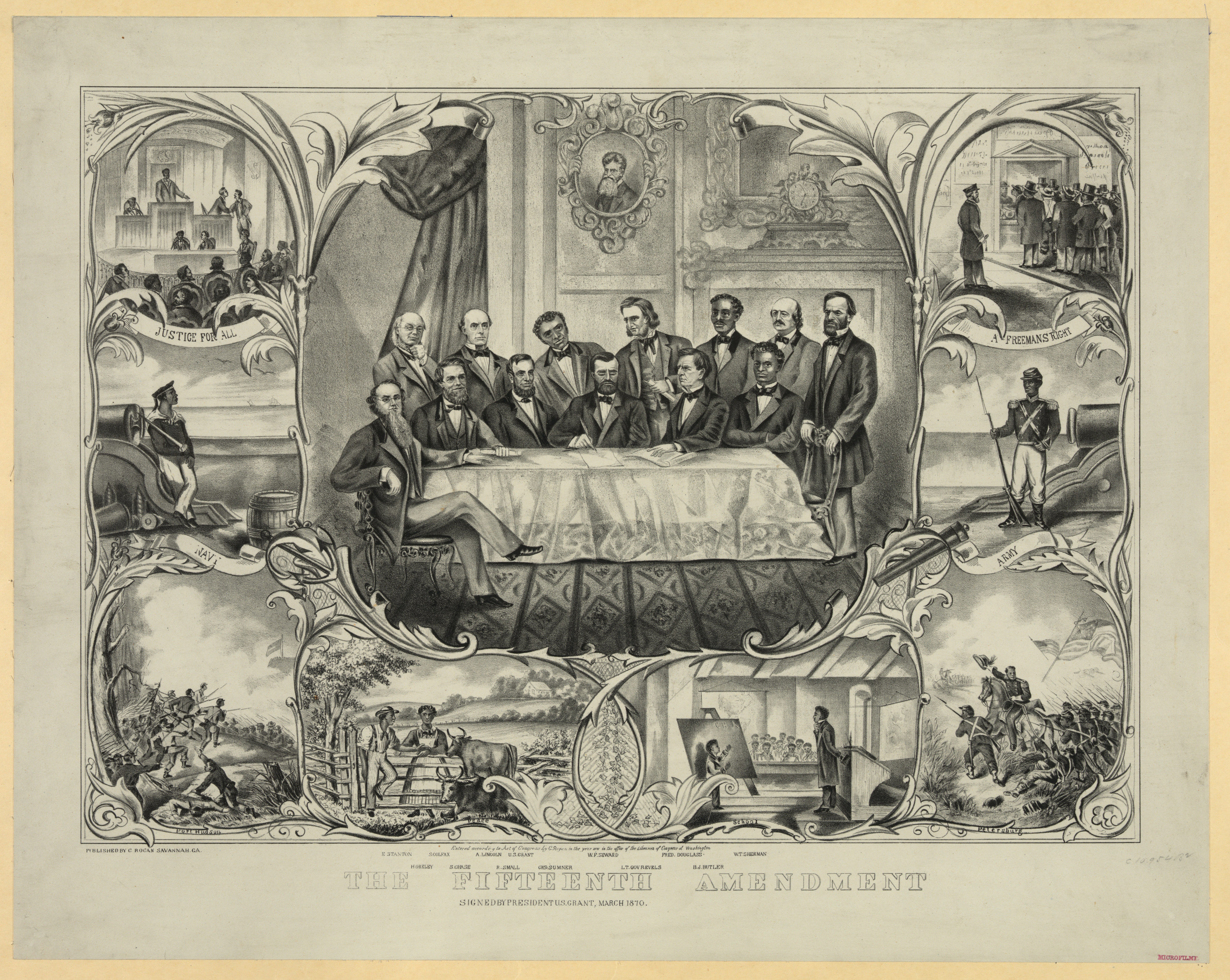
(opens in new tab)
Douglass was an advocate for dialogue and alliances across ideological divides. Notably, he was a supporter of women'south suffrage campaigns and was a close friend of women's suffrage campaigners Elizabeth Cady Stanton and Susan B. Anthony.
Related: Women'southward suffrage anniversary: Which countries led the way? (opens in new tab)
However, Douglass came into conflict with the women's suffrage motility through his support of the Fifteenth Amendment, passed on February. 26, 1869, which gave Black men the right to vote, but not women. Douglass'southward stance on the Fifteenth Amendment, and the opposition of some women's suffrage campaigners to Black suffrage, acquired a rift within the American Equal Rights Clan (AERA), which bankrupt upward in 1869, according to the Arlington Public Library (opens in new tab).
Douglass continued to argue in his book "Life and Times of Frederick Douglass (opens in new tab)," (De Wolfe, Fiske & Co. 1892) that the disenfranchisement of women was equally damaging to the United States as the denial of Blackness citizens' right to vote. "I would requite woman a vote, give her a motive to qualify herself to vote, precisely every bit I insisted upon giving the colored human being the right to vote," he wrote.
The "Quaternary of July" oral communication
What, to the American slave, is your 4th of July? ...To him, your commemoration is a sham.
Frederick Douglass
On July 5, 1852, Douglass gave one of his most famous speeches, "What to the slave is the Fourth of July," to the Ladies' Anti-Slavery Guild of Rochester, New York.
"I practice non hesitate to declare, with all my soul, that the character and conduct of this nation never looked blacker to me than on this 4th of July!" he said. " What, to the American slave, is your 4th of July? I answer: a twenty-four hours that reveals to him, more than all other days in the year, the gross injustice and cruelty to which he is the constant victim. To him, your celebration is a sham."
In the speech, Douglass made the example that positive statements about the U.South. and its independence were an barb to enslaved people, who could not share in the nation's celebration of freedom.
Political career
Douglass published iii versions of his life story, in 1845, 1855 and 1881 (with a revised edition in 1892). Past the outbreak of the American Ceremonious War (opens in new tab) in 1861, he was one of the most famous Blackness men in the U.S. equally well as both an ardent supporter and honest critic of Abraham Lincoln (opens in new tab). Subsequently, during the Reconstruction era, Douglass received several political appointments, including President of the Freedman's Savings Bank.
Related: What if Lincoln had lived? (opens in new tab)
Douglass supported Ulysses S. Grant's 1868 presidential campaign amongst a fierce period of backlash against newly emancipated slaves and the rise of the Ku Klux Klan. Later, in 1889, President Harrison appointed him equally the U.S. Minister Resident and Consul-General to Republic of haiti, and the chargé d'affaires to Santo Domingo.
In 1872 he became the offset African American to exist nominated for vice president (opens in new tab) of the United States (though without his knowledge or approval).
Later years and legacy
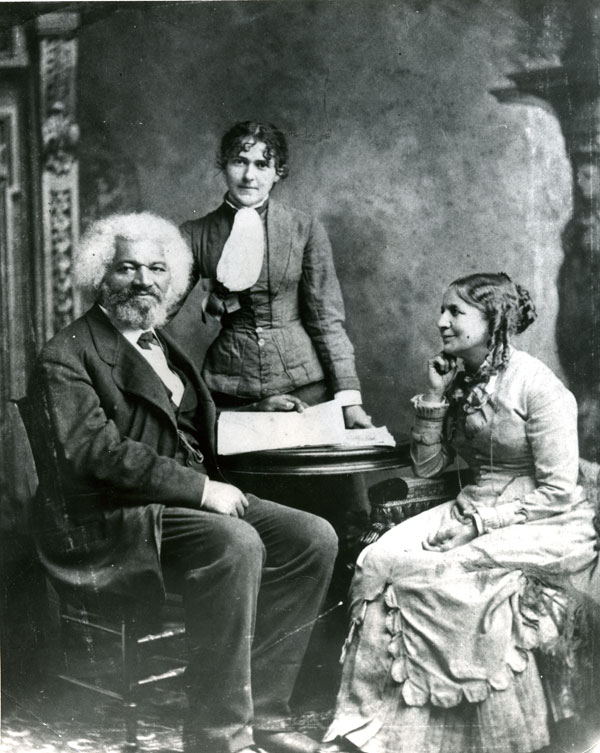
(opens in new tab)
The end of Douglass' life was turbulent. According to the U.S. Library of Congress (opens in new tab) timeline of his life, he was forced to flee into exile later on being defendant of collaborating with radical abolitionists who attempted to raid Harpers Ferry in 1859. In 1872, per the New York Times (opens in new tab), his home was burned down in an arson assail, causing him to motility to Washington, D.C. with his family.
His family unit life besides became a focus of gossip and scandal: According to Smithsonian magazine (opens in new tab), he was rumored to have had 2 affairs with white women while his married woman Anna was alive. She died in 1880, and Douglass was married over again less than two years later on to Helen Pitts, a white suffragist and abolitionist 20 years his junior.
His diplomacy and controversial second marriage tainted Douglass' reputation. Afterwards accounts like Rosetta Douglass Sprague'southward memories of her female parent bandage a sympathetic light on their mother, Anna Douglass, who remained Douglass' virtually ardent supporter through controversy and adultery.
Douglass continued touring and traveling, speaking and campaigning into his final days — to his very last moments. After receiving a standing ovation for a speech on women's suffrage in 1895, the 77-year-erstwhile Douglass collapsed from a heart attack. Thousands passed past his coffin to pay their respects, and he continues to be honored by countless statues, remembrances and plaques across the world.
This commodity was adapted from a previous version published in All About History magazine, a Future Ltd. publication. To larn more about some of history's nearly incredible stories, subscribe to All Most History (opens in new tab) magazine.
Half Slave Half Free Sparknotes,
Source: https://www.livescience.com/frederick-douglass.html
Posted by: granttherstand54.blogspot.com


0 Response to "Half Slave Half Free Sparknotes"
Post a Comment